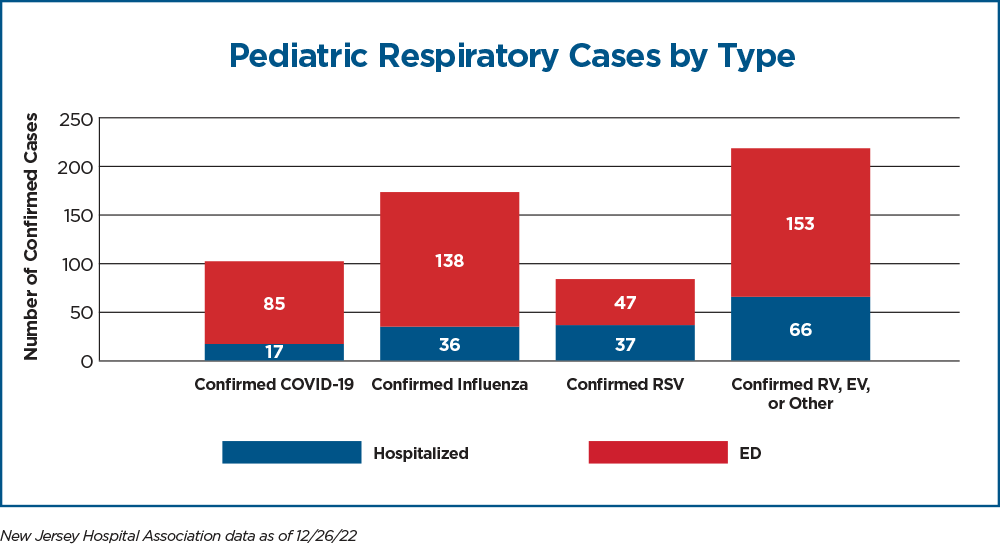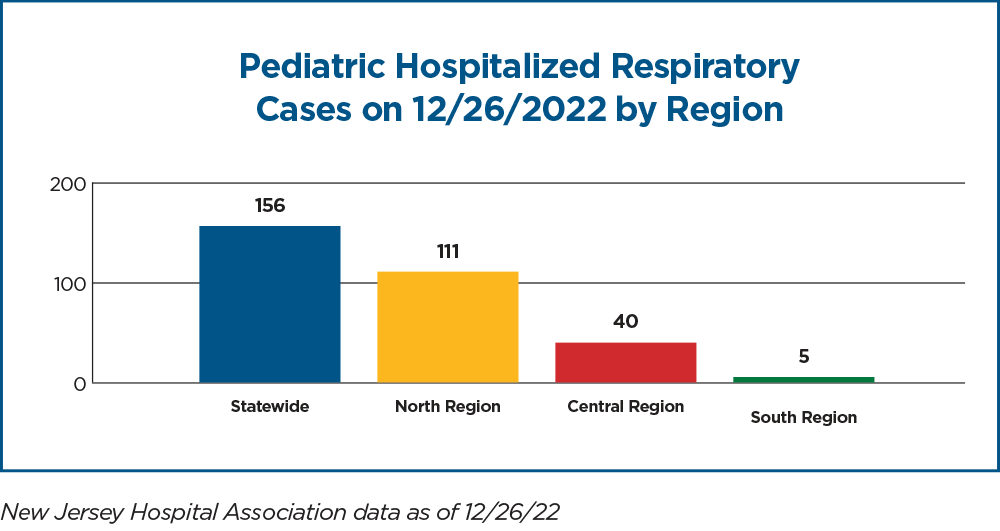
 Uzma Hasan, MD
Uzma Hasan, MD
Divison Director Pediatric Infectious Diseases,
Cooperman Barnabas Medical Center
Respiratory syncytial virus causes acute respiratory illness in all age groups, with some being impacted more severely than others. It typically causes an upper respiratory infection but can cause lower respiratory tract infection bronchiolitis or pneumonia. Typically these patients will present with cough, rhinitis, increased work of breathing, wheezing, intercostal/subcostal retractions, grunting and nasal flaring. Fever may or may not occur. Infants with RSV may present with irritability, poor feeding or apneic spells. The incubation period is 2-8 days, and RSV is transmitted with direct/ close contact with contaminated secretions or by touching contaminated surfaces. Respiratory syncytial virus typically causes seasonal outbreaks, in the Northern hemisphere from October through April/May, in the Southern hemisphere from May through September. During the COVID-19 outbreak mitigation measures eg masking, social distancing and school closures likely impacted transmission of RSV during the winter season. With relaxation of these measures, an increase in RSV infections has been noted. Patients at risk of severe lower respiratory tract infection with RSV are infants <6mo, infants with chronic lung disease (bronchopulmonary dysplasia, cystic fibrosis), premature infants, infants with congenital heart disease, those with HIV, those with Down’s syndrome, immunocompromised patients (SCID, leukemia, or transplant), patients with persistent asthma, those with neurologic or neuromuscular diseases, institutionalized adults, and adults with cardiopulmonary disease. Almost all children have had RSV infection atleast once by age 24 months, and can get infection again, subsequent infections being less severe. Testing is via rapid diagnostic assays, RSV antigen detection test which have a sensitivity 80% specificity of 97%. False negative results may occur in those on Palivizumab prophylaxis. Molecular PCR based assays have higher sensitivity and specificity. Of note as many as 30% of symptomatic children may show a co-infection with 2 or more viruses. Treatment is primarily supportive care. Beta-adrenergic agents are not recommended for wheezing associated with RSV bronchiolitis. Corticosteroid treatment does not reduce hospital admission rates for bronchiolitis and does not reduce length of stay. Antimicrobial therapy is only indicated if concern for a concomitant bacterial infection.

Prevention
Palivizumab is a monoclonal antibody that may be considered for those at high risk of RSV- associated severe illness and hospitalizations. It is dosed at 15mg/kg once every 30 days. First dose must be given at onset of RSV season. Palivizumab is not used for treatment for RSV.
- Preterm infants with chronic lung disease of prematurity, <32 weeks gestational age, history of >21% Oxygen requirement for at least the first 28 days of life.
- During the second year, continue prophylaxis only if child with chronic lung disease of prematurity continues to require medical support (steroids, diuretics, or oxygen) during the 6 mo prior to RSV season onset.
- Infants with hemodynamically signifi cant congenital heart disease
- Preterm infants born before 29 weeks who are <12 mo at start of RSV season
- Can consider for children with anatomic pulmonary abnormalities or neuromuscular disorder
- Severely immunocompromised <24 mo
Palvizumab prophylaxis is discontinued if there’s a breakthrough RSV infection in an infant receiving monthly prophylaxis because the likelihood of hospitalization with a second RSV infection in the same season is low.
Newer monoclonal antibodies are being developed which may cost less, and last longer.

RSV Vaccines
Several vaccine trials are under way, looking at looking at vaccination of older adults with promising results and also vaccinating pregnant women, which in turn will lead to transplacental passage of antibodies and protect infant.

https://www.cdc.gov/rsv/research/rsv-net/dashboard.html
The ASP, representing pediatric providers, including pediatric infectious disease specialists and pharmacists, exchange ideas, discuss case management strategies and develop and implement guidelines to be shared system wide, as well as serve as a resource for community physicians.
For more educational information, research and best practices from the Children’s Health Network at RWJBarnabas Health, visit rwjbh.org/childrenshealthresearch.